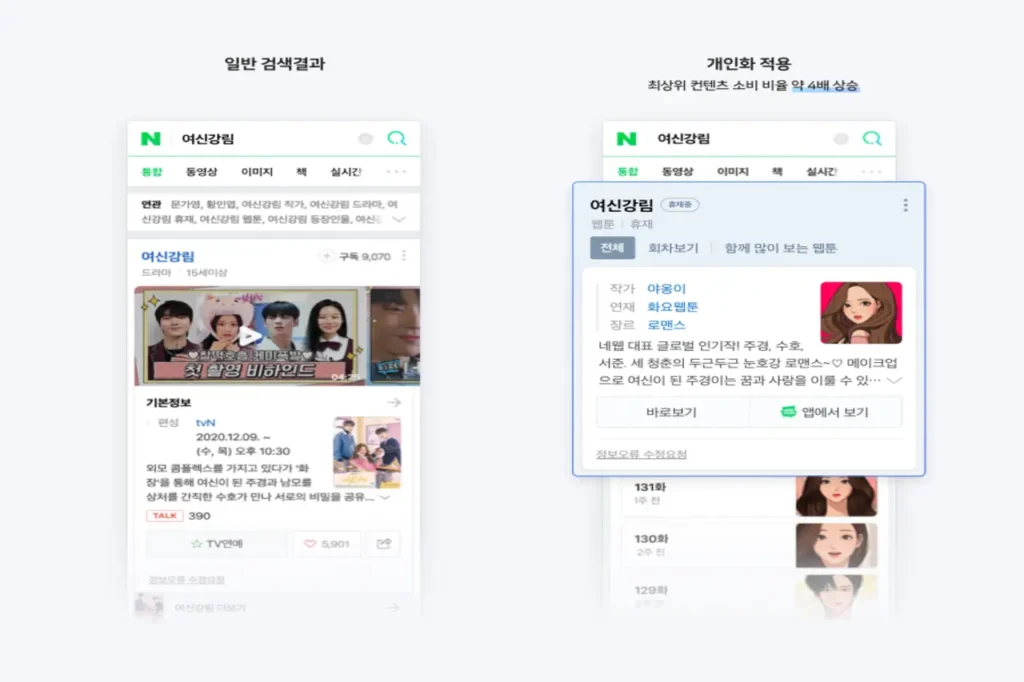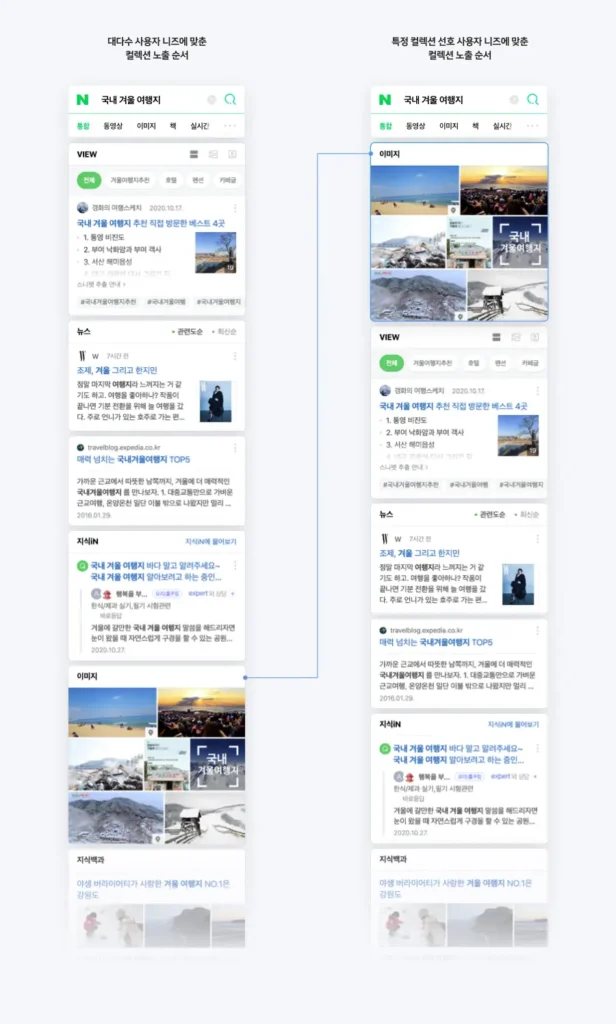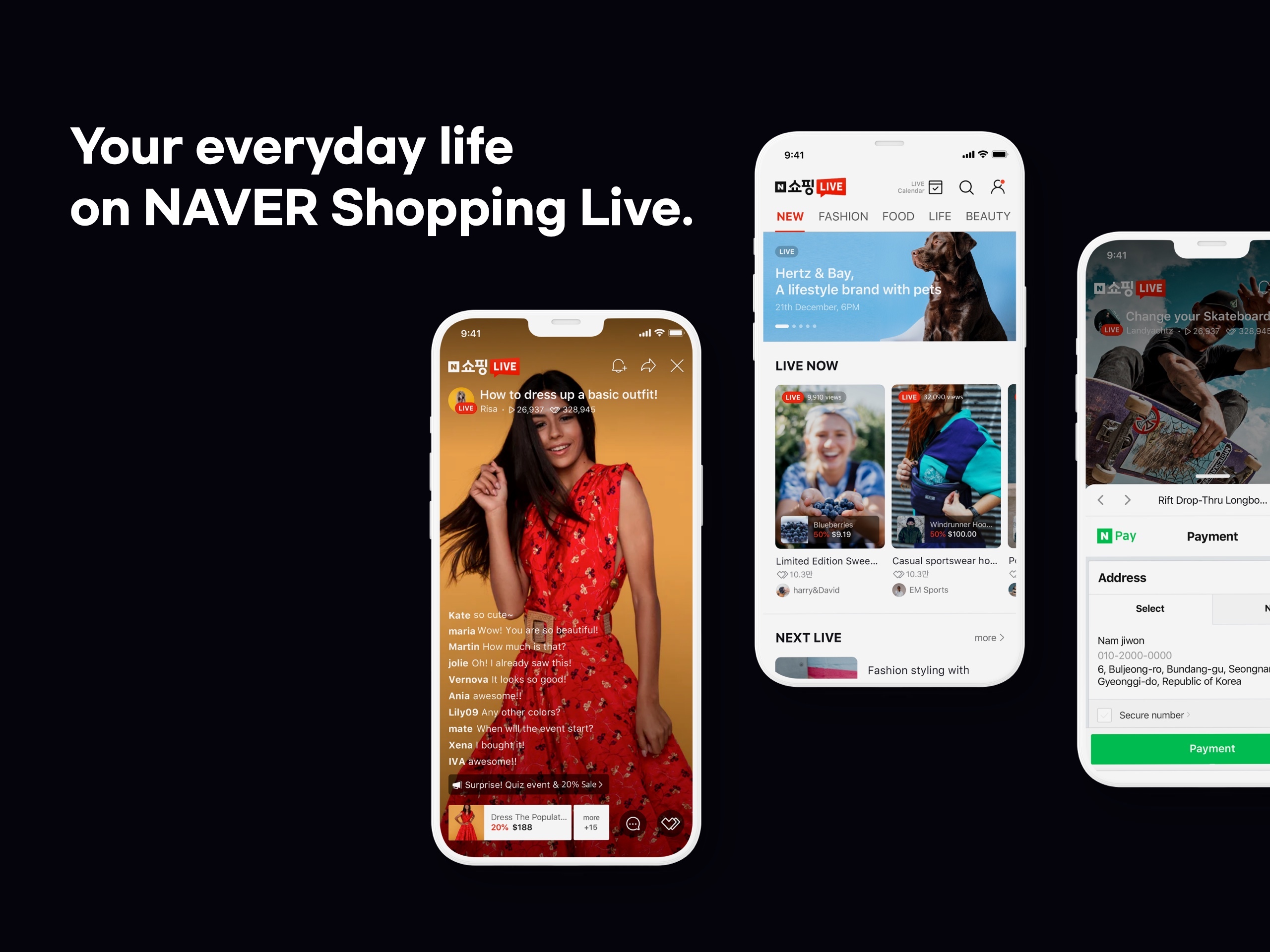Have you ever felt that the search results on Naver vary slightly each time you search? If so, you’ve already experienced Naver’s personalized search!
According to a 2020 article by Naver, personalized search has been an integral part of their strategy for some time now.
Naver SEO strategies aren’t just about improving the user experience—it represents a significant change for digital marketing strategies. Understanding these dynamics can help marketers adapt and thrive in this evolving landscape.
In this article, we will delve deep into Naver SEO strategies, especially the personalized search, and discuss how they impact our marketing strategies and how we should respond.
Introduction to Naver’s Personalized Search
Why did Naver introduce personalized search? The main reason is to enhance user satisfaction. Naver has constantly strived to help users find the information they want faster and more accurately. However, one challenge remained: every user’s search intent is different.
For example, when searching for K-pop star “IU,” some might look for the latest album information, while others might seek details about her upcoming drama. To meet these diverse needs, Naver introduced personalized search.
Naver’s Efforts to Improve User Satisfaction
Naver SEO strategies include content diversification, user pattern analysis, and real-time optimization.
- Content Diversification: Provides various types of content such as movies, webtoons, and news for the same search term.
- User Pattern Analysis: Analyzes individual search and click histories to understand preferred content types.
- Real-time Optimization: Adjusts search results in real-time based on user behavior.
These efforts ultimately aim to help users find the information they want more easily and quickly. For marketers like us, this is significant because it provides an opportunity for our content to reach the right target more accurately!
Naver SEO Strategies: Personalized Search Implementation
Now, let’s take a closer look at how Naver implements personalized search.
Personalization of Content Information
Naver’s first strategy is the personalization of content information, which provides various types of content according to user preferences.
For example, when searching for “True Beauty (여신강림)”:
- Users who frequently watch K-dramas are presented with detailed information about the TV show, including the latest episodes, cast details, and viewer ratings.
- Users who enjoy webtoons are shown information about the “True Beauty” webtoon series, such as chapter summaries, artwork, and recommendations for other similar webtoons.

To achieve this, Naver conducts user pattern analysis using statistical methods, specifically employing the Hellinger Distance statistical technique to understand users’ content consumption patterns and provide appropriate search results.
💡Marketing Insight: This suggests that we marketers need to create various types of content. Producing content in diverse formats, such as blog posts, infographics, and videos on a single topic, increases the likelihood of exposure to more users.
Personalization of Collection Rankings
Naver’s second strategy is the personalization of collection rankings, which involves displaying preferred document types (e.g., images, videos, news) at the top of search results.
For instance:
- Users who often click on news are shown news collections at the top.
- Users who frequently view images are shown image collections at the top.
Naver also uses statistical methods to analyze user patterns, comparing them with other users to determine which type of collection a specific user prefers and reflecting this in the search results.

💡Marketing Insight: This highlights the importance of understanding the preferred content format of our target audience. For example, if targeting a younger demographic, focusing on video content, while targeting professionals may require more detailed text-based content.
Future Development Directions
Naver is continuously developing its personalized search. Notably, it is working on a new content and channel recommendation system that reflects users’ tastes and interests. This signifies a shift towards actively recommending new information that users might be interested in, beyond merely personalizing search results.
💡Marketing Insight: This emphasizes the importance of content marketing. Beyond creating keyword-optimized content, we must accurately understand our target audience’s interests and needs and consistently produce high-quality content that meets those needs.
Impact on Marketing Strategies
Let’s now explore in detail how these changes in Naver SEO strategies affect our marketing strategies.
Content Optimization
Naver’s personalized search demands significant changes to our content strategy.
Necessity of Creating Various Forms of Content
We now need to create diverse forms of content on a single topic. For example, if marketing under the theme “healthy diet”:
- Blog Post: “10 Tips for Effective Dieting”
- Infographic: “Meal Plans to Boost Diet Success Rates”
- Video: “5-Minute Diet Exercise Routine”
- News Article: “Scientific Basis of Dieting Revealed by Latest Research”
By producing content in various formats, we can reach different user groups who prefer text, visual information, or videos.
Selecting Content Types Suitable for Target Audience
At the same time, we must focus on the content types preferred by our main target audience. For example:
- For targeting 10-20 year-olds: short, fun videos, infographics, etc.
- For targeting 30-40 year-old professionals: in-depth blog posts, expert interviews, etc.
- For targeting those over 50: easy-to-read news-style content, large font infographics, etc.
We should develop a content strategy that considers the characteristics and preferences of our target audience.
Explore Growth Marketing Agency’s Content Marketing Case Study
Changes in Naver SEO Strategies
Naver’s personalized search also requires significant changes to the existing Naver SEO strategies.
Diversification of Keyword Strategy
It is no longer enough to focus solely on popular keywords. Instead, the following approaches are necessary:
- Utilizing Long-tail Keywords: Use more specific and segmented keywords. For example, instead of the general keyword “diet,” use more specific keywords like “low-carb diet for 30-year-old professionals.”
- Semantic Keyword Grouping: Group related keywords semantically to compose content. For example, group “diet,” “weight loss,” “calorie restriction,” and “healthy diet” together to create comprehensive content.
Optimization Based on User Intent
Focus on user search intent rather than the keywords themselves. For example:
- Informational Search: Provide detailed guides answering questions like “What are the principles of dieting?”
- Transactional Search: For keywords like “buy diet food,” provide product comparison information or purchase guides.
- Navigational Search: Directly link to official websites or product pages for brand names or specific product searches.
Increased Importance of Technical SEO
Naver will use more complex algorithms to provide personalized search results. Therefore, the following technical SEO elements become more important:
- Structured Data Markup: Use Schema.org, etc., to clearly convey the meaning and structure of the content.
- Mobile Optimization: Ensure mobile-friendly design and fast loading speed.
- Site Structure Optimization: Build a clear and logical URL structure and internal linking system.
Importance of Analyzing User Behavior
Naver’s personalized search operates based on user behavior data. Therefore, we need to analyze and understand user behavior more precisely.
Analysis of Customer Search Patterns and Preferences
We need to collect and analyze the following data:
- Key Inflow Keywords
- On-site Search Terms
- Page Dwell Time
- Click Path
- Engagement by Content Type (e.g., text vs. video)
Developing Data-Driven Marketing Strategies
Based on the collected data, we can develop the following strategies:
- Creating Customized Content for Customer Segments
- Identifying and Focusing on the Most Effective Content Types
- Optimizing User Journey
- Establishing Retargeting Strategies
Conclusion
In conclusion, Naver’s personalized search is a significant change that requires us to rethink and adapt our marketing strategies. By understanding and responding effectively to these changes, we can ensure that our content reaches the right target audience and achieves the desired results.
At Growth Marketing Agency, we have extensive experience in navigating Naver’s content ecosystem. Our team is well-versed in crafting strategies that can help your business effectively reach and engage its target audience. By leveraging our expertise, you can turn these changes into opportunities and stay ahead of the competition. Embracing Naver SEO strategies can help your business stay competitive in this dynamic digital landscape.


